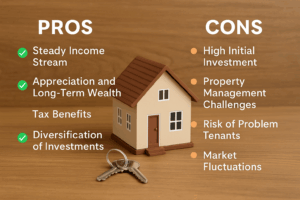Purchasing a home is one of life’s most significant milestones, and when done with a partner, it can also be one of the most rewarding. The journey to co-ownership involves thoughtful planning, open communication, and strategic financial decisions. This guide will walk you through the critical steps and considerations necessary to make the process as smooth and successful as possible.
Assessing Your Readiness
Financial Evaluation
Before diving into the property market, it’s crucial to evaluate your financial standing. Take the time to review your income, savings, debts, and credit scores. This financial snapshot will help you determine your price range and identify any areas where you need improvement. Pay particular attention to joint finances, as lenders often assess both partners’ financial situations.
Setting a Budget
Creating a realistic budget is essential. Discussing your financial goals and limits with your partner will prevent future conflicts. Consider all potential costs, including down payments, closing costs, property taxes, and maintenance expenses. Keep in mind that purchasing a home is not merely about the initial investment; ensure your budget accommodates potential fluctuations in interest rates and market conditions.
Establishing Priorities
Defining Must-Haves
Your dream home might look different from your partner’s, so it’s vital to align your priorities. Create a list of must-haves, such as the number of bedrooms, preferred neighborhoods, proximity to work or family, and other factors that are important to both of you. Understanding each other’s preferences will help streamline the house-hunting process.
Compromising on Preferences
Few homes will meet every criterion perfectly. Identifying areas where you can compromise without sacrificing significant priorities is key. Being flexible and open-minded can broaden your options and lead to satisfactory decisions for both partners.
Understanding Legal Implications
Deciding on Ownership Structure
There are various legal structures for co-ownership, such as joint tenancy or tenancy in common, each with its benefits and limitations. Joint tenancy allows both partners to have equal ownership shares and rights of survivorship, while tenancy in common permits different ownership proportions and independent rights. Consulting with a real estate attorney can provide clarity and help you choose the best structure for your circumstances.
Drafting a Co-Ownership Agreement
It’s wise to draw up a co-ownership agreement to outline each partner’s responsibilities and expectations, including financial obligations, maintenance duties, and conflict resolution mechanisms. Though it may seem unnecessary when relationships are thriving, a formal agreement protects both parties’ interests in case of disputes or changes in circumstances.
Navigating the Buying Process
Securing Financing
Explore various financing options, including joint mortgages, and vet lenders to find the most favorable terms. Gather necessary documentation, such as pay stubs, tax returns, and bank statements, to streamline the application process. Keep in mind that lenders will scrutinize both credit histories, so maintaining a healthy financial profile is beneficial.
Hiring a Real Estate Agent
Engage a reputable real estate agent familiar with the local market. A knowledgeable agent can provide valuable insights, recommend properties that meet your criteria, and negotiate effectively on your behalf. Ensure that the agent understands your unique needs as a purchasing couple.
Conducting Thorough Inspections
Once you find a potential property, arranging a comprehensive inspection is imperative. Inspections help uncover hidden issues that might impact your decision. It’s wise to be present during the inspection to ask questions and better understand potential repairs or renovations.
Preparing for Closing
Reviewing All Documents
Before closing, review all documents meticulously. This includes the purchase agreement, loan terms, and title insurance. Understanding each detail can prevent misunderstandings and ensure all conditions meet your expectations.
Final Walk-Through
Perform a final walk-through of the property to verify that everything is as agreed upon, and any clauses or contingencies in the purchase agreement have been satisfied. This final inspection is your opportunity to address discrepancies or request last-minute repairs.
Entering Homeownership Together
Establishing a Maintenance Routine
Set clear expectations for home maintenance and upkeep responsibilities. Decide how duties will be divided and agree on a schedule to complete tasks. Regular maintenance not only preserves property value but also prevents costly repairs.
Open Communication
The foundation of successful co-ownership lies in transparent communication. Regularly discuss concerns, financial planning, and future goals to ensure continuity in expectations and aspirations. Keeping an open dialogue fosters trust and strengthens the partnership.
Purchasing a home with a partner is a significant step in your life journey, symbolizing both a commitment to each other and a shared future. By collaborating effectively, respecting each other’s perspectives, and navigating the complexities of the buying process with determination and patience, you can find the perfect home to create lasting memories and build a life together.




